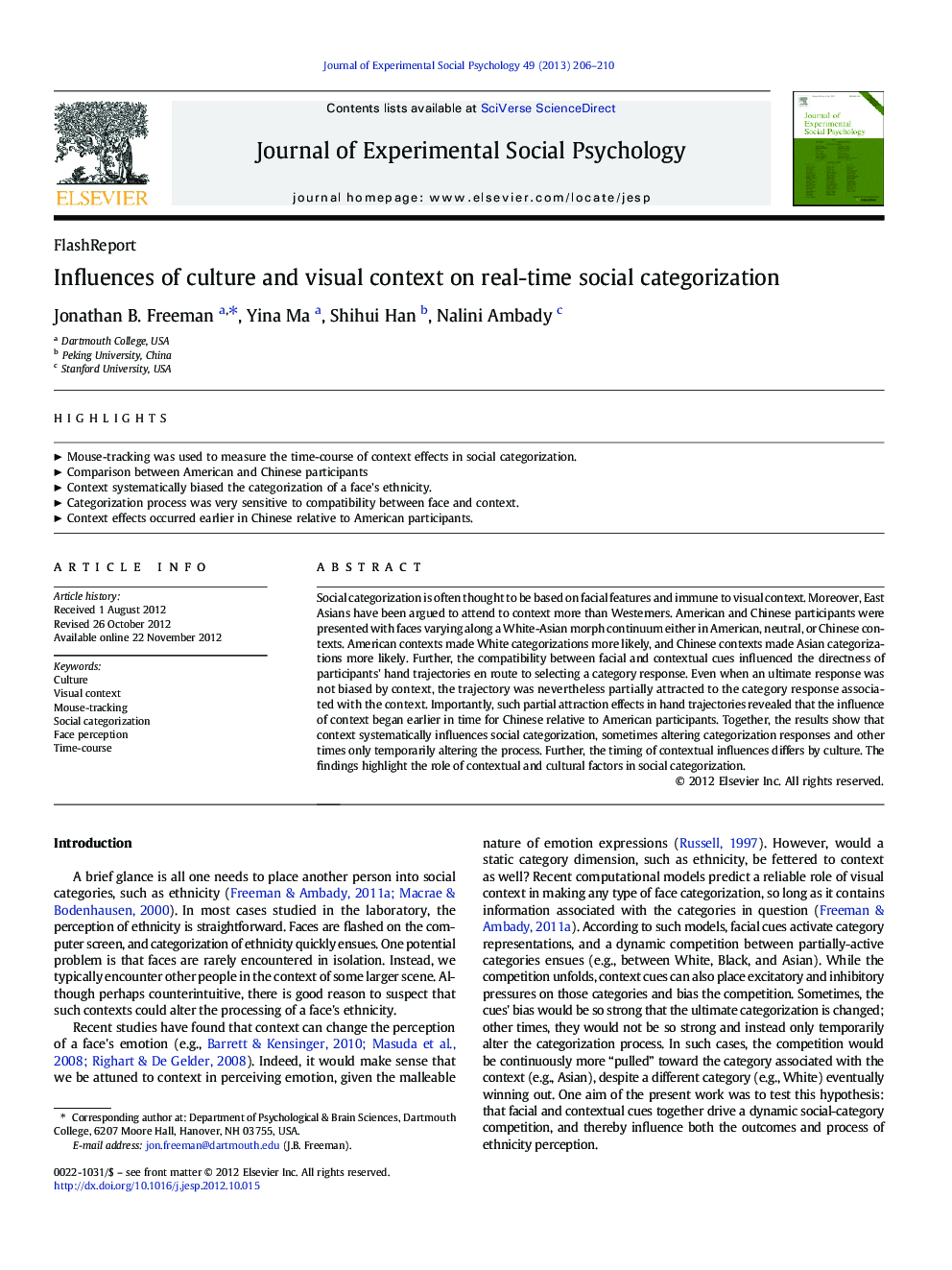| Article ID | Journal | Published Year | Pages | File Type |
|---|---|---|---|---|
| 947859 | Journal of Experimental Social Psychology | 2013 | 5 Pages |
Social categorization is often thought to be based on facial features and immune to visual context. Moreover, East Asians have been argued to attend to context more than Westerners. American and Chinese participants were presented with faces varying along a White-Asian morph continuum either in American, neutral, or Chinese contexts. American contexts made White categorizations more likely, and Chinese contexts made Asian categorizations more likely. Further, the compatibility between facial and contextual cues influenced the directness of participants' hand trajectories en route to selecting a category response. Even when an ultimate response was not biased by context, the trajectory was nevertheless partially attracted to the category response associated with the context. Importantly, such partial attraction effects in hand trajectories revealed that the influence of context began earlier in time for Chinese relative to American participants. Together, the results show that context systematically influences social categorization, sometimes altering categorization responses and other times only temporarily altering the process. Further, the timing of contextual influences differs by culture. The findings highlight the role of contextual and cultural factors in social categorization.
► Mouse-tracking was used to measure the time-course of context effects in social categorization. ► Comparison between American and Chinese participants ► Context systematically biased the categorization of a face's ethnicity. ► Categorization process was very sensitive to compatibility between face and context. ► Context effects occurred earlier in Chinese relative to American participants.
